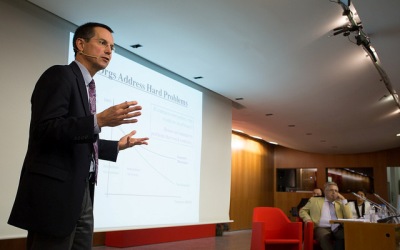ITFD alum Mihai Patrulescu ’10 analyzes the Romanian market in an article for Emerging Europe.
“Over the past three years, the Romanian economy has recorded some of the fastest growth rates in the European Union, helped by a rapid expansion of consumer spending,” he writes. “During this period, retail sales have benefited from what can be considered as a perfect storm of growth catalysts.”
Read his full commentary on the Romanian economy on Emerging Europe
Mihai’s bio from Colliers International:
Mihai has joined Colliers International in October 2016 as Head of Strategic Analysis. Prior to this position, Mihai coordinated the economic research activities of UniCredit Romania, working for the bank between 2012 and 2016. During this period, he has focused on the Romanian economy as well as the CEE region, along with the banking system and financial markets. Prior to UniCredit, Mihai also worked as a research economist for Bancpost, the Romanian subsidiary of EFG Eurobank.
During 2015/2016, Mihai was seconded on assignment to the Milan Headquarters of UniCredit, working as a management consultant on the implementation of the bank’s strategic plan.
Mihai holds a Master’s in International Trade, Finance and Development from the Barcelona Graduate School of Economics. During his academic undertakings, he has focused on economic crises in emerging markets, and particularly their impact on financial systems. Mihai also holds a Bachelor degree from the Academy of Economic Studies in Bucharest.

